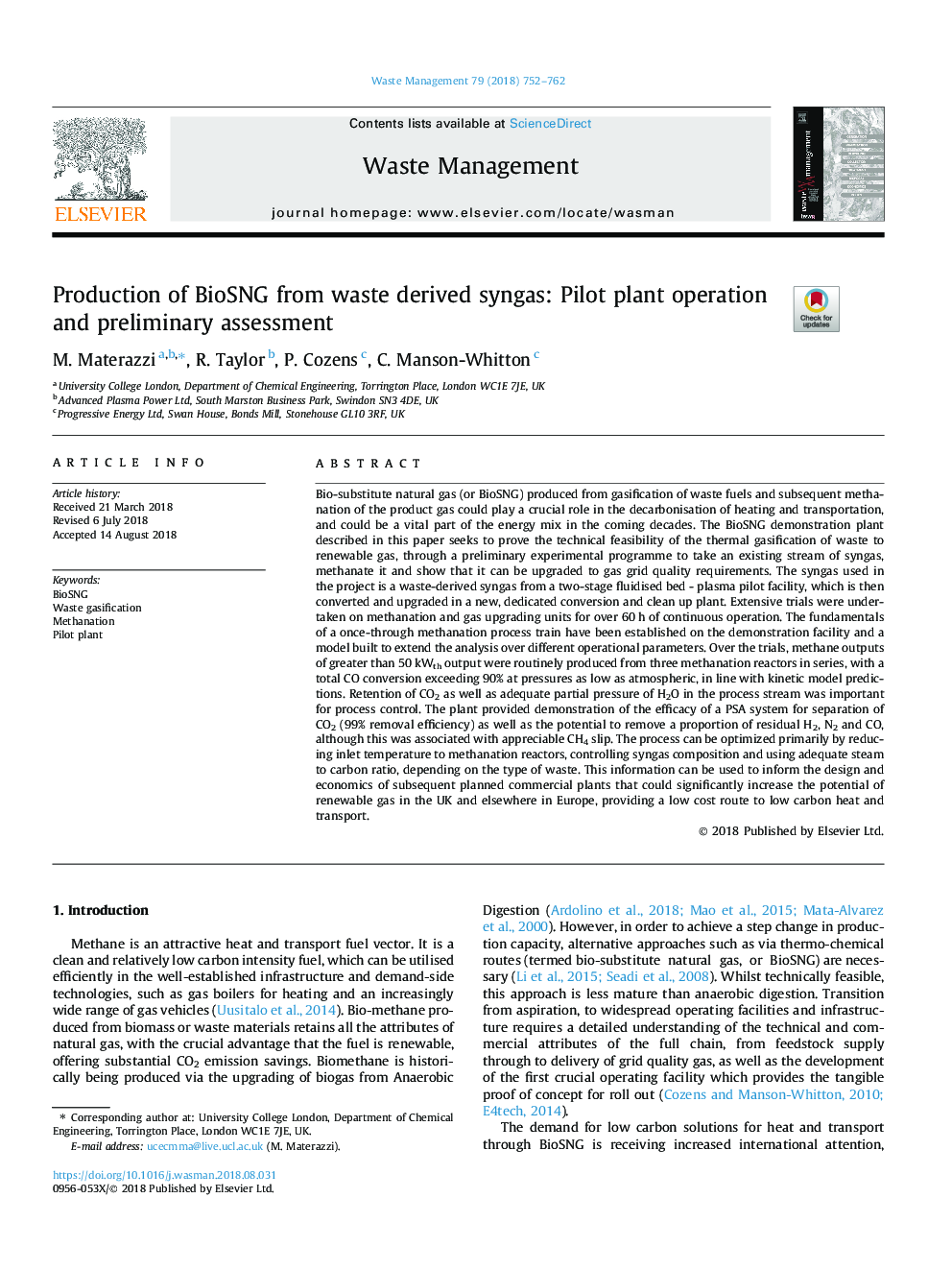| کد مقاله | کد نشریه | سال انتشار | مقاله انگلیسی | نسخه تمام متن |
|---|---|---|---|---|
| 11033319 | 1622607 | 2018 | 11 صفحه PDF | دانلود رایگان |
عنوان انگلیسی مقاله ISI
Production of BioSNG from waste derived syngas: Pilot plant operation and preliminary assessment
دانلود مقاله + سفارش ترجمه
دانلود مقاله ISI انگلیسی
رایگان برای ایرانیان
موضوعات مرتبط
مهندسی و علوم پایه
علوم زمین و سیارات
مهندسی ژئوتکنیک و زمین شناسی مهندسی
پیش نمایش صفحه اول مقاله

چکیده انگلیسی
Bio-substitute natural gas (or BioSNG) produced from gasification of waste fuels and subsequent methanation of the product gas could play a crucial role in the decarbonisation of heating and transportation, and could be a vital part of the energy mix in the coming decades. The BioSNG demonstration plant described in this paper seeks to prove the technical feasibility of the thermal gasification of waste to renewable gas, through a preliminary experimental programme to take an existing stream of syngas, methanate it and show that it can be upgraded to gas grid quality requirements. The syngas used in the project is a waste-derived syngas from a two-stage fluidised bed - plasma pilot facility, which is then converted and upgraded in a new, dedicated conversion and clean up plant. Extensive trials were undertaken on methanation and gas upgrading units for over 60â¯h of continuous operation. The fundamentals of a once-through methanation process train have been established on the demonstration facility and a model built to extend the analysis over different operational parameters. Over the trials, methane outputs of greater than 50â¯kWth output were routinely produced from three methanation reactors in series, with a total CO conversion exceeding 90% at pressures as low as atmospheric, in line with kinetic model predictions. Retention of CO2 as well as adequate partial pressure of H2O in the process stream was important for process control. The plant provided demonstration of the efficacy of a PSA system for separation of CO2 (99% removal efficiency) as well as the potential to remove a proportion of residual H2, N2 and CO, although this was associated with appreciable CH4 slip. The process can be optimized primarily by reducing inlet temperature to methanation reactors, controlling syngas composition and using adequate steam to carbon ratio, depending on the type of waste. This information can be used to inform the design and economics of subsequent planned commercial plants that could significantly increase the potential of renewable gas in the UK and elsewhere in Europe, providing a low cost route to low carbon heat and transport.
ناشر
Database: Elsevier - ScienceDirect (ساینس دایرکت)
Journal: Waste Management - Volume 79, September 2018, Pages 752-762
Journal: Waste Management - Volume 79, September 2018, Pages 752-762
نویسندگان
M. Materazzi, R. Taylor, P. Cozens, C. Manson-Whitton,